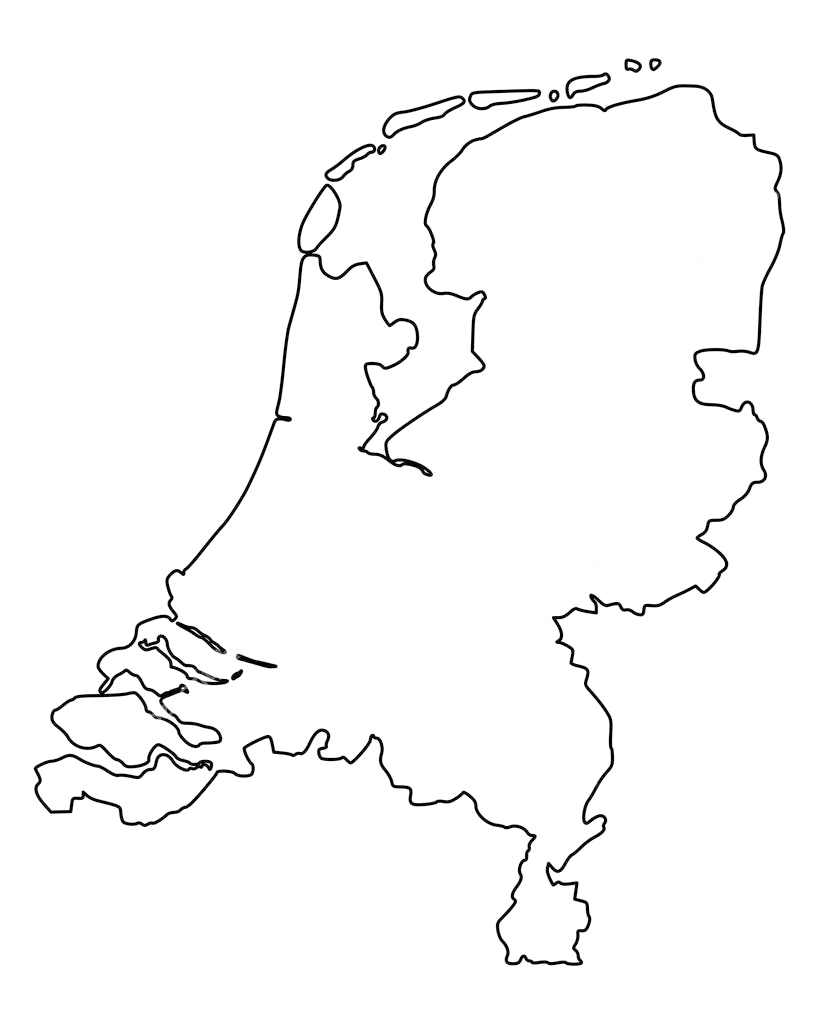Having squared, rounded and compressed the Netherlands, of course I had to fold it, too.…
Compressed
Have been reading the survey ‘Nederland van de kaart’ – published by the Association for the Dutch Man-Made Landscape. As we have no landscape that has not been created or at least influenced by man, the Association’s sphere of interest is rather large – all of the Netherlands, in fact. In ‘Nederland van de kaart’ they concentrate on rural areas.
The title of the publication can be translated as both ‘The Netherlands off the map’ and ‘The Netherlands disturbed’. The writers of the publication have set themselves the task to make a map of the Netherlands showing where the landscape is (still, against all odds) beautiful and where it is (become) ugly. Not an easy task – they spend a lot of effort delineating ‘beautiful’ and ‘ugly’, and defending their use as criteria. As in the arts, ‘beautiful’ used to be suspect in landscape design. And if not suspect: meaningless.
Anyways, I’m going to translate part of the treatise here. The part I’m interested in is where they give their take on ‘the engine called Ruilverkaveling’ – the land consolidation projects that transformed more than 70% of the Netherlands agricultural areas in the last century. Before starting the translation I show a result from my very own ‘Ruilverkaveling’: I applied rigorous logic to the shape of the Netherlands as a whole.

“Beautiful, varied and nature-rich landscapes are the results of care, repetition, diversity in space and stability in time. Us Dutch differ from other European countries because we did not only create and structure much of our landscape, we have also – in less than 60 years – given it a total makeover to adapt it to the (supposed) claims of the modern age.
There are few West-European countries where the state as rigorously and as consequently re-shaped a landscape that had been centuries in the making. No other country straightened almost all its streams and rivers folliwing a normalizing principle, as if free flowing and meandering rivers were not normal. Might we also mention the straightening of roads that once organically followed the contours of the landscape and serpentined towards their goals. Farmers were relocated from farms built according to local tradition – a great regional variety existed. Here and there in the landscape modern farms were built on spots where no buildings stood before.
The land consolidation – a blessing, according to many – has made a complete cesure between the organically formed landscapes that were and the rationalised landscapes that became, jettisoning tradition, local customs, biodiversity and history.
From about 3000 BC farmers gained dominance over hunter-gatherers. Farmers started to change their envionment to suit their needs – a man-made landscape was created. Over time iit became a rabbit warren of fields, ditches, hedges, coppices and hedgerows. Much later, the destruction of these landscape elements in a relatively few years – between 1959 and 1990 – was the greatest cause of damage to nature ever since the landscape was originally brought under the plow.
About 70% of the Dutch landscape has been consolidated, ‘ruilverkaveld’. These projects straigtened 95% of the streams and small rivers, 39.000 km of country roads and lanes disappeared. Between 250.000 and 300.000 km of ditches were filled, hedgerows and hedges uprooted. About 25.000 historical farm buildings went under the – subsdised – demoliton hammer, where new farms were constructed without reference to the building traditions of the area. Some rural areas have been ‘consolidated’ multiple times, and lost all reference to the way they were before. “
.







